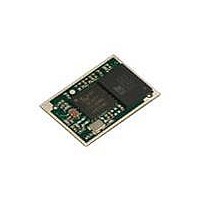DVK-BTM411 Laird Technologies, DVK-BTM411 Datasheet - Page 41

DVK-BTM411
Manufacturer Part Number
DVK-BTM411
Description
BLUETOOTH EVAL BOARD BTM411
Manufacturer
Laird Technologies
Type
Transceiverr
Specifications of DVK-BTM411
Frequency
2.4GHz
Wireless Frequency
2.402 GHz to 2.48 GHz
Interface Type
UART
Data Rate
2.1 Mbps
Operating Voltage
3 V to 3.3 V
Antenna
Multilayer Ceramic Integrated
Operating Temperature Range
- 30 C to + 70 C
Output Power
4 dBm
Technology/ Type
Development Kit
For Use With/related Products
BTM411
Lead Free Status / RoHS Status
Lead free / RoHS Compliant
Lead Free Status / RoHS Status
Lead free / RoHS Compliant, Lead free / RoHS Compliant
Other names
DVK-BTM411
Available stocks
Company
Part Number
Manufacturer
Quantity
Price
Company:
Part Number:
DVK-BTM411-02
Manufacturer:
LAIRD
Quantity:
2
BTM410/411
Bluetooth
AT COMMAND SET
REFERENCE
41 www.lairdtech.com
®
AT Data Module
8. Maximum RF-Tx Power Level
9. Manufacturing Info String
10. Bluetooth Version
11. Legacy Issues (BT2.0)
Sniff mode during connection is basically an agreement between the slave and its master that data
packets will only be exchanged for N timeslots every M slots. The slave can then assume that it will
never be contacted during M-N slots, and so can switch its power hungry circuitry off. The specification
goes further by also specifying a third parameter called ‘timeout’ (T) which specifies ‘extra’ timeslots
that the slave will agree to listen for after receiving a valid data packet. Put another way, if a data
packet is received by the slave, then it knows that it MUST carry on listening for at least T more slots.
If within that T slot time period another data packet is received, then the timer is restarted. This
mechanism ensures low power consumption when there is no data transfer – at the expense of latency.
When there is a lot of data to be transferred, it acts as if sniff mode were not enabled.
It is stated above that during sniff mode, a slave listens for N slots every M slots. The Bluetooth
specification states that a master can have up to 7 slaves attached to it with all slaves having requested
varying sniff parameters. It may therefore be impossible to guarantee that each slave gets the M
parameter it requested. In light of this, the protocol for enabling sniff mode specifies that a requesting
peer specify the M parameter as a minimum and maximum value. This will allow the master to
interleave the sniff modes for all slaves attached.
For this reason, the sniff parameters are specified in the BTM module via four S registers. S Register 561
is used to specify ‘N’, S Register 562 is used to specify ‘T’ and S Registers 563/564 are used to specify
minimum ‘M’ and maximum ‘M’ respectively. Although the specification defines these parameters in
terms of timeslots, the S register values have to be specified in units of milliseconds and the firmware
does the necessary translation to timeslots.
The maximum RF transmit power level for all operation states (inquiring / connecting / in connection) is
controlled by S541 / S542.
A string with manufacturing information can be retrieved by “ATI200”.
The Bluetooth version can be queried by “ATI18”.
There are some special cases if a legacy device (BT2.0 or earlier, e.g.BISM2) requests a connection to
a BTM device (BT2.1).
General bonding does not work if initiated by the legacy device. Instead, the legacy device must
initiate dedicated bonding first (=pairing, BISM2: “AT+BTW<BdAddr>”). After successful pairing,
the connection can be initiated by the legacy device (BISM2: “ATD<BdAddr>”).
Figure 3.8: Sniff Mode Example
Laird Technologies




















